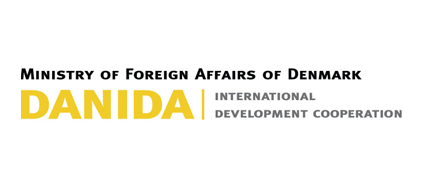The Danish International Development Agency, better known by its acronym DANIDA is the part of the Danish Ministry of Foreign Affairs that provides humanitarian aid and development assistance to developing countries.
The goal of Denmark’s development cooperation is to reduce poverty through the promotion of human rights and economic growth. In its development efforts, DANIDA targets four priority areas:
Media development interventions typically fall under the Human Rights and Democracy category. “The work for free and independent media is a part of Denmark’s long lasting commitment for supporting human rights and developing civil society,” Mogens Jensen, then minister of trade and development cooperation, told participants in a speech to the Global Media Freedom Conference 2015 in Copenhagen.
Typically, Danish development support is given through bilateral development cooperation–direct development assistance–or through multilateral channels. About 70 percent of Danish aid is targeted directly to specific countries or regions, and 30 percent is given through multilateral organizations, such as the United Nations, the World Bank, and UNESCO.

In the CIMA survey, each donor was asked to rate from high to low in terms of priority the types of media interventions it supports.
In its media development support, DANIDA gives the highest priority to projects promoting freedom of information and the legal environment surrounding independent media. Denmark’s support to media development is focused on activities implemented in ODA (Official Development Assistance) eligible countries. ODA is a term used by the Development Assistance Committee (DAC) of the Organization for Economic Co-operation and Development (OECD) to measure aid.
DANIDA’s ODA assistance includes bilateral programs with specific media interventions managed by Danish embassies in DANIDA’s priority countries, which include Pakistan, Myanmar, Zimbabwe, Burkina Faso, and Niger. Other priority countries may also have been provided support in the media and freedom of expression categories through broader human rights and democratization programs.
Besides the DANIDA priority countries, Denmark has provided media development assistance from its headquarters rather than its embassies to China, Eastern Partnership Countries and Turkey (covering Ukraine, Belarus, Turkey, and Azerbaijan), and countries in the Middle East and North Africa (MENA) regions. In the latter, DANIDA’s emphasis has been on Tunisia, Egypt, Yemen, Libya, Syria, and Jordan.
Last year DANIDA spent about about 40.4 million Danish Kroner (DKK) (approximately $6 million at 2016 exchange rates) on more than 30 media development projects globally.
At the Global Media Freedom Conference, Mogens Jensen, then minister of trade and development cooperation, announced that DANIDA was giving DKK 20 million ($3.08 million at May 2016 exchange rates) to support media freedom projects. WAN-IFRA (World Association of Newspapers and News Publishers) received 15 million DKK ($2,242,320 at 2016 exchange rates) for a multi-country project on media freedom that focuses on Kenya, Uganda, South Africa, the Philippines, Malaysia, Indonesia, Egypt, Palestine, Jordan, Colombia, Ecuador, and Mexico. International Media Support (IMS) received 5 million DKK ($747,400 at 2016 exchange rates) for a journalists’ safety project in Colombia, the Philippines, Pakistan, Indonesia and Iraq. In addition, DANIDA has given support to IMS programs targeting interventions in countries in conflict and crisis.
In 2015, DKK 3 million (approximately $461,464 at 2016 exchange rates) were disbursed for projects. This included in DKK 1.4 million (approximately $215,350 at 2016 exchange rates) in Africa, DKK 1.4 million (approximately $215,350) in Asia, and DKK 200,000 (approximately $30,765 at 2016 exchange rates) in Eurasia.
Evaluations
Denmark makes systematic use of evaluations and seeks to illustrate the connection between Danish development assistance and the results that are created. It has published all evaluations since 1987. Staff say that one of the biggest challenges in media development assistance is measuring its impact.
$6 Million
2015 Media Development Aid Budget
30
Number of Projects Globally
$2.2 Million
WAN-IFRA Multi-country Media Freedom Project Spending
Since 2004, Denmark has provided support to media development in the MENA region through a strategic partnership with IMS to promote an enabling environment, conducive to media freedom and with safe working conditions. The goal is to provide reliable and diverse information. The IMS program is implemented in collaboration with partners in the MENA region, including national and regional media institutions, media support organizations, public entities whenever possible, and a range of civil society organizations and individuals.
DANIDA’s Media and Democratisation Programme in the Eastern Partnership Countries and Turkey (2012-2016) builds on a mapping of the evolving media, democracy, and human rights contexts in the region as well as the experience of media actors and lessons learned from programs previously supported by the Danish government from 2008-2012. It aims to promote a pluralistic media environment, through strengthening independent media institutions and enhancing the quality and coverage of media reporting in the region.
On April 29-30, 2015, Denmark’s Ministry of Foreign Affairs and WAN-IFRA held a Global Media Freedom Conference in Copenhagen. The meeting brought together more than 100 editors and journalists from around the world. In the context of the conference, Denmark announced the approval of 20 million DKK (approximately $3.08 million at 2016 exchange rates) to strengthen free public discourse in developing countries and weak states. The funds were earmarked for free media capacity building, with a particular focus on ensuring the safety of journalists.
The funding allowed WAN-IFRA to support more than 60 media outlets in 12 countries throughout Africa, the Middle East, Asia and Latin America in workshops on digital media development, professional training of women, and better legal protection of media. IMS, in cooperation with different international media organizations, such as the International Federal of Journalists (IFJ) and the European Federation of Journalists (EFJ), was to create a global forum for development and best practices on journalists’ safety.
Website: http://um.dk/en/danida-en/
Report Author: Marguerite Sullivan
Added: March 2017